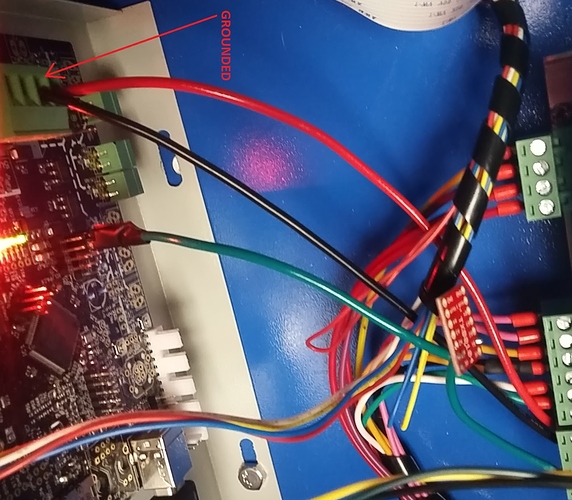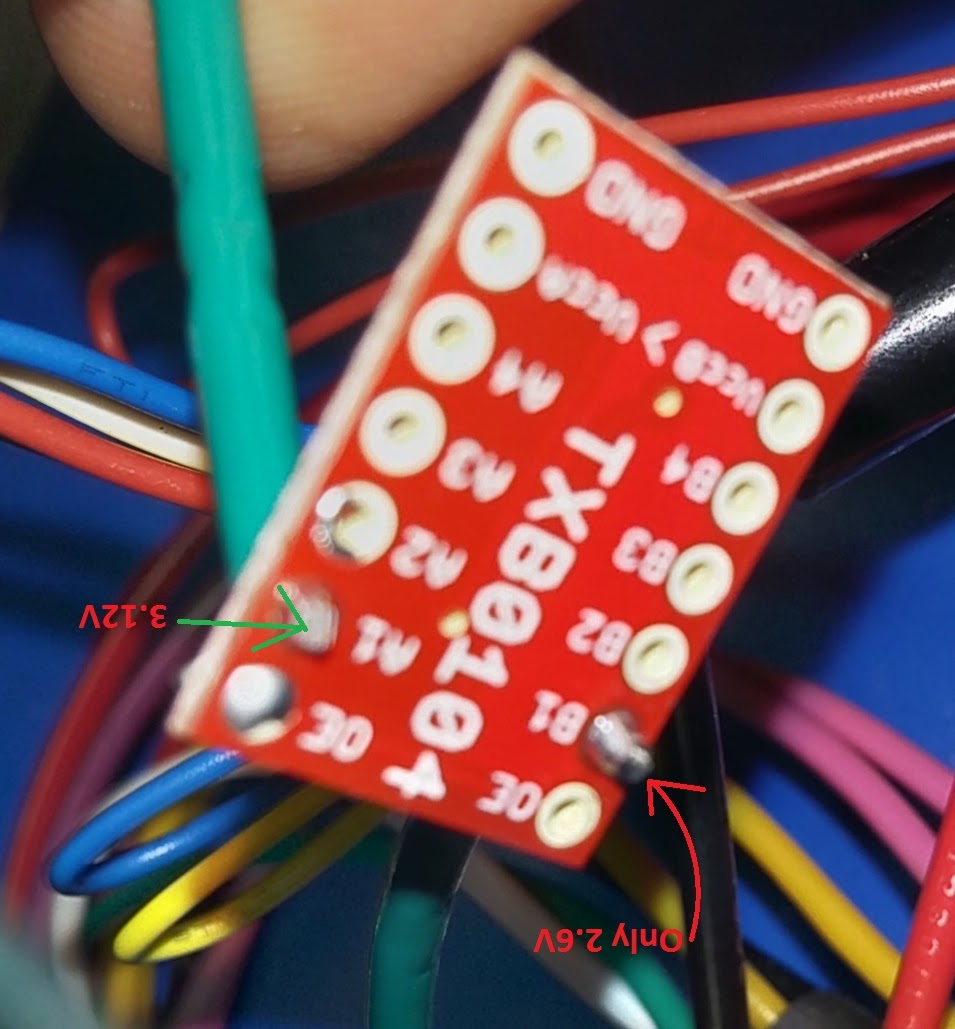I see you connected the Smoothie to the 5V side and the Laser to the 3.3v side, that’s backwards.(somehow I missed that in our last interaction) The K40PSU uses 5V negative logic and the Smoothieboard uses 3.3v logic (thus the need for a level shifter).
No harm should have been done to the Smoothie as long as you had it connected to the INPUT on the 5V side.
Connect the level shifter so that Smoothie pin 2.4 connects to the 3.3v INPUT and the 5V Output is connected to the PSU ‘L’ Pin. and try again.
You’ll have to change the setup of the level shifter to use 3.3v as the INPUT and use the output as the 5V OUTPUT
There is another gentleman who is also having problems with a Sparkfun level shifter.
I’m not real familiar with the Sparkfun device, but the setup for any “raw” level shifter can be a little confusing for someone without much logic circuit experience. On MOST of them you have a direction line which designates which side (A or B) is In and so on. Some require one side be the higher voltage, where with others it doesn’t matter as long as the Vcc is powered from the correct voltage power supply. You really have to pay attention to the details. To top it off, each manufacturer has their own way of writing the spec sheet, making it hard to compare ‘apples to apples’. To further complicate things, all the new slick ICs are only available in super micro SMD packages. You would think they would release them in Good ole DIPs for testing and prototyping, if not for the forgotten hobbyists for the engineers to use in prototyping and testing. SOT and SOIC packages are now considered huge and wasteful. A far cry from the old “stone sandwich” days.
==================================================
The ALL-Tek Micro-Mark Level Shifter
Since we see so many people here with level shifter wiring questions, I decided a solution would be worth creating. Actually I already have a solution available in my ACR series, but for people preferring to ‘DIY’ it, I’ve created The ALL-Tek “Micro Mark” Level Shifter. It’s a plug in solution to the level shifter issue, and addresses several common level shifter problems such as loss of power.
It uses very low ON resistance MOSFETs for the output so you get 100% of your Lasers power when you call for it. Many logic shifters don’t pull the input all the way down to Zero Volts because .9v is the standard permissible logic “0” signal and my device is purpose built to fire a K40 so it pulls down to within a few microvolts of true Zero.
It also includes full optical isolation, with only a beam of light between your Smoothie and K40. Not even the ground is shared so it eliminates any concerns about noise transmission, ground loops or power supply interactions.(thinking of you Julia)
It uses positive logic, making it safer than traditional level shifters, and requires a positive 3.3v signal to fire. This prevents inadvertent firing while the Smoothieboard boots up. This change does require one small change to the Config file(you just delete the !), but it comes with ALL-Teks EZ-Config for the K40 on DVD along with full instructions.
It’s self powered, drawing it’s very small power requirements from the drive and driven devices, and last but not least, is solder free and comes with cables that plug into the Smoothieboard and K40PSU. Fully PWM compatible with plenty of bandwidth.There’s a input and output LED to make any unlikely troubleshooting easy. It’s 1 1/4" square with 4 M3(6-32) mounting holes on 1" centers. $29.95
The 1st batch will be available soon (boards are being made now)
Scott


